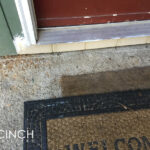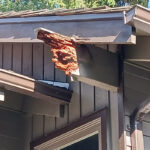CONTACT US
- info@cinchbuilders.com
- 308 E Yelm Ave, #40
Yelm, WA 98597
Tel:(206) 578-2480
services details
Dry Rot Services
Every year, countless homes in the northwest fall victim to the insidious effects of dry rot. This silent devastator weakens structures over time, often going unnoticed until the damage is costly and extensive. For homeowners and property managers in the northwest, understanding the menace of dry rot is essential to preserving the integrity of the spaces we live and work in.
As providers of Dry Rot Services and local northwest builders let’s walk you through the importance of recognizing dry rot, examining the visual cues, deciding between DIY and professional intervention, the treatment processes, and crucial prevention measures. By the end, you’ll know how to protect your property against this common but preventable issue.
Understanding the Enemy: What is Dry Rot?
Dry rot, scientifically known as Serpula lacrymans, is a type of wood decay caused by certain species of fungi. It commonly affects materials with high cellulose content, such as timber in domestic buildings. Despite its name, dry rot doesn’t require a dry environment to thrive-it can grow in damp and poorly ventilated settings, making it a common issue in the Pacific Northwest, known for its moist climate.
How Dry Rot Forms
For dry rot to develop, three key components must be present:
- Moisture: Excess water is the catalyst for spore germination.
- Oxygen: The fungus needs air to colonize the timber.
- Warmth: Ideally, temperatures between 65 to 90°F (18 to 32°C) to accelerate the decay process.
The spores of the dry rot fungus are ever-present, meaning the right conditions can lead to an outbreak at any time.
The Impact on Homes in the Northwest
When dry rot takes hold in the likes of Seattle, WA, it compromises the strength and integrity of any timber it infects. This can lead to structural issues, from sagging floors and weakened walls to the collapse of entire building sections. Beyond the structural effects, dry rot can also cause aesthetic damage, including discoloration and a musty smell in the affected areas.
Recognizing Dry Rot: The Visible Clues
Dry rot often starts unnoticed but can be identified by several telltale signs. It’s crucial to be vigilant, as early detection can mean the difference between a minor repair job and a major structural overhaul.
Look for These Signs
- Fruiting Bodies: These are typically mushroom-like and indicate the presence of the active fungus.
- Concentrated Mycelium Growth: Mycelium is a web-like fungus mass often appearing in strands or sheets.
- Damaged Wood with Cuboidal Cracking: A characteristic of dry rot, this cracking pattern reveals the fibrous structure unseen in healthy timber.
- Musty Smell: A damp, musty odor in specific areas could signal the presence of dry rot and other fungi.
- Discoloration: A change in the color of the wood can indicate a dry rot infection, often accompanied by a brittle texture when prodded.
Where to Inspect
Pay particular attention to:
- Basements and Crawlspaces: These tend to be damp and rarely ventilated, creating ideal conditions for dry rot.
- Around Leaks: Moisture from roofs, windows, or plumbing leaks can cause and exacerbate dry rot.
- Near the Ground: Timbers close to soil or in contact with concrete can absorb moisture, promoting dry rot growth.
DIY or Call a Pro? Treating Dry Rot in Your Home
When faced with a dry rot issue, homeowners often debate between a do-it-yourself approach and professional intervention. Each option has its merits, so it’s essential to consider your skills, available time, and the extent of the problem.
The DIY Option
DIY dry rot treatment with the necessary knowledge and equipment can be more cost-effective. Simple repairs and localized treatments, like fungicide applications, are within reach for skilled homeowners. However, it’s crucial to be confident in your ability to identify the full extent of damage and contain the spread of the fungus.
Professional Services
Bringing in a professional dry rot specialist like Cinch Construction ensures that the full scope of the damage is assessed and treated. As professionals, we have the experience to handle complex repairs, including fungal treatment, structural reinforcement, and moisture management. While this option is pricier, it provides the peace of mind that the job is done thoroughly and correctly.
The Dry Rot Removal Process Defined
If you choose to enlist professional help, here’s what to expect from a dry rot removal service:
Inspection and Assessment
A thorough evaluation of the affected areas is the starting point. This involves:
- Locating and documenting all visible signs of dry rot.
- Assessing the structural integrity of the affected elements.
Treatment Plan Development
Based on the inspection findings, a comprehensive treatment plan is devised. This can include:
- Identifying strategies to eliminate the source of moisture.
- Establishing a fungal treatment protocol, often involving fungicides and structural drying techniques.
- Planning the replacement or reinforcement of damaged timbers.
Implementing the Plan
Once the treatment plan is approved:
- Skilled technicians will perform repairs, including replacing timbers and employing specialist drying methods to eliminate residual moisture.
- Fungal treatment products will be applied as necessary, usually with follow-up inspections and treatments to ensure eradication.
Post-Treatment Prevention
A critical phase is implementing measures to prevent future dry rot, such as:
- Reinforcing structures to reduce the risk of recurrence.
- Educating homeowners on good ventilation practices.
- Periodic inspections to catch any early signs of re-infestation.
Preventing Dry Rot: A Proactive Approach
Prevention is always better than cure when it comes to dry rot. There are several strategies homeowners can implement to minimize the risk of an outbreak:
Improve Ventilation
Good airflow helps prevent moisture buildup. Tips for better ventilation include:
- Installing and maintaining vents in kitchens, bathrooms, and other moisture-prone areas.
- Keeping air ducts unblocked to allow air to circulate.
- Using fans to move air and speed up evaporation in wet areas.
Routine Dry Rot Maintenance
A well-maintained home is less susceptible to decay. Include these tasks in your property maintenance routine:
- Seal gaps and cracks to prevent water intrusion and fungal growth.
- Keep gutters and downspouts clean to direct water away from the home.
- Monitor plant growth near the house, as roots can damage foundations and worsen moisture issues.
The Critical Element of Timely Action
Ignoring the signs of dry rot can have dire consequences for your home’s structure and safety. Act fast when you suspect an issue and don’t underestimate the value of professional advice.
Why Timeliness Matters
Addressing dry rot repair promptly:
- Minimizes the scope of damage, reducing repair costs and efforts.
- Safeguards the health of occupants by preventing the spread of mold spores.
- Preserve the property’s value and resale potential.
Remember, the longer you wait, the more extensive the damage can become. Fast action is the best defense against dry rot’s pervasive effects.
Don’t wait for dry rot to make itself conspicuous through extensive damage. Start your prevention and inspection routine today, and remember, when it comes to your home’s health, prevention is always the best cure.
To ensure the job is done right, call our staff at 206-578-2480.




